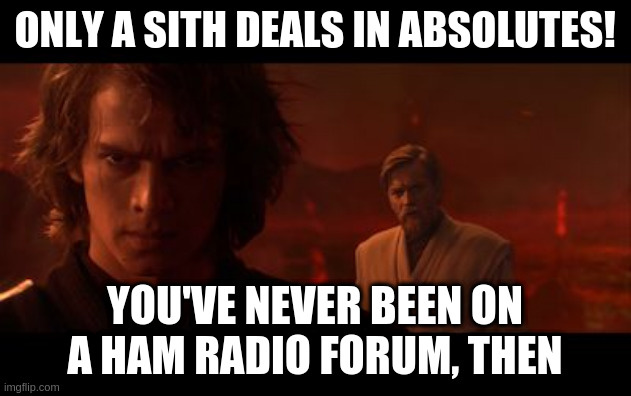Richard’s point, I’m sure, is that well designed SDRs, single conversion and double conversion radios will all work well, and dismissing any of them on the basis of known poor implementations could potentially eliminate a good (or better) design from your consideration simply due to absolutes.
What Richard failed to realise is this is a ham radio forum. There is no place for shades of grey, even where shades exist.
